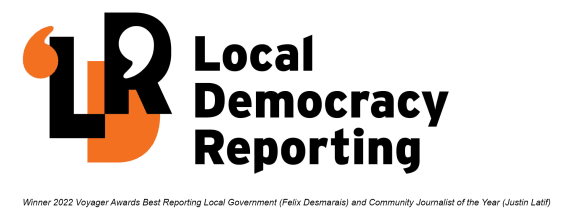
Taruheru Cemetery. Photo: Supplied / NZ War Graves Project
Gisborne's most popular cemetery is running out of space for new graves, forcing the council to look at future burial options.
In Gisborne, 92 percent of burials and ash interments are held at Taruheru Cemetery, with an average of two burials a week.
The cemetery is expected to be full within 10 years.
At a council meeting on Thursday, councillors discussed two potential solutions: Extend the area of the cemetery or look for other land options.

The council owns 2.7 hectares of land opposite the cemetery (on 587 Nelson Road), which is not currently zoned or classified as a cemetery and would take work to develop.
Planning team leader Tyler Kirk said the council was looking at a feasibility study on the Nelson Road land.
The research would take place in three stages: assessing geotechnical hazards and hydrological conditions, investigating the feasibility of re-zoning, and then a cultural impact assessment.
The study could take up to a year to complete, and if any part of the research finds the area unfeasible, the team would come back to the council, Kirk said.
Councillor Aubrey Ria said heavy rain often closed the cemetery to burials and people could not bury tūpāpaku.
"This [such events] left a lot of distress on some of our community members having to have their loved ones stored and waiting for somewhere for them to lie."
Ria suggested looking for land away from waterways that was not prone to flooding.
Additionally, she said the area had suburbia around it.
"It's effectively just one paddock, which extends our time to be able to provide a service, but we will have to start looking for another site anyway," she said.
Councillor Larry Foster said it would be nice to have the land area close to the cemetery, however, it would only be a temporary fix.
"If we're going to have population growth, this is an area where it is going to expand, and having a cemetery in the middle might not be the best fit," he said.
Kirk said from a groundwater perspective, Gisborne would have its challenges.
"Groundwater isn't unique to that site - it is one large, sandy system," he said.
The Te Hapara Sands aquifer that affected Taruheru Cemetery also ran across large parts of Mangapapa, Riverdale, and even into Makaraka and Awapuni, he said.
Kirk said the study would investigate the capacity of the site based on the groundwater conditions and measure against burial trends and climate projections.
"Cremation is trending upward; we've moved from a 60:40 or a 30:70 to the inverse in 10 years," he said.
"We will be modelling from what we know today, and of what we think the future use of that site will be."
Councillor Nick Tupara said given the growing Māori population in Gisborne, it was likely that many people would want to go back to their hapū and iwi marae for burial.
Councillor Rob Telfer said it was obvious the land was inadequate.
"If we listen to the experts that tell us sea levels are rising, just because we own this land next door, it's really obvious that maybe it's not the suitable place."
Councillors Tony Robinson and Colin Alder suggested green burial sites, where one can bury and plant a tree on top and regenerate.
"A block of land that allows for native bush I would have thought would be a no-brainer," Robinson said.
Kirk said they had been advised to do the study first so that the council could have a strong justification for not using the land that they already owned, if the study showed they needed to look for other options.
- Local Democracy Reporting is local body journalism funded by RNZ and NZ On Air







